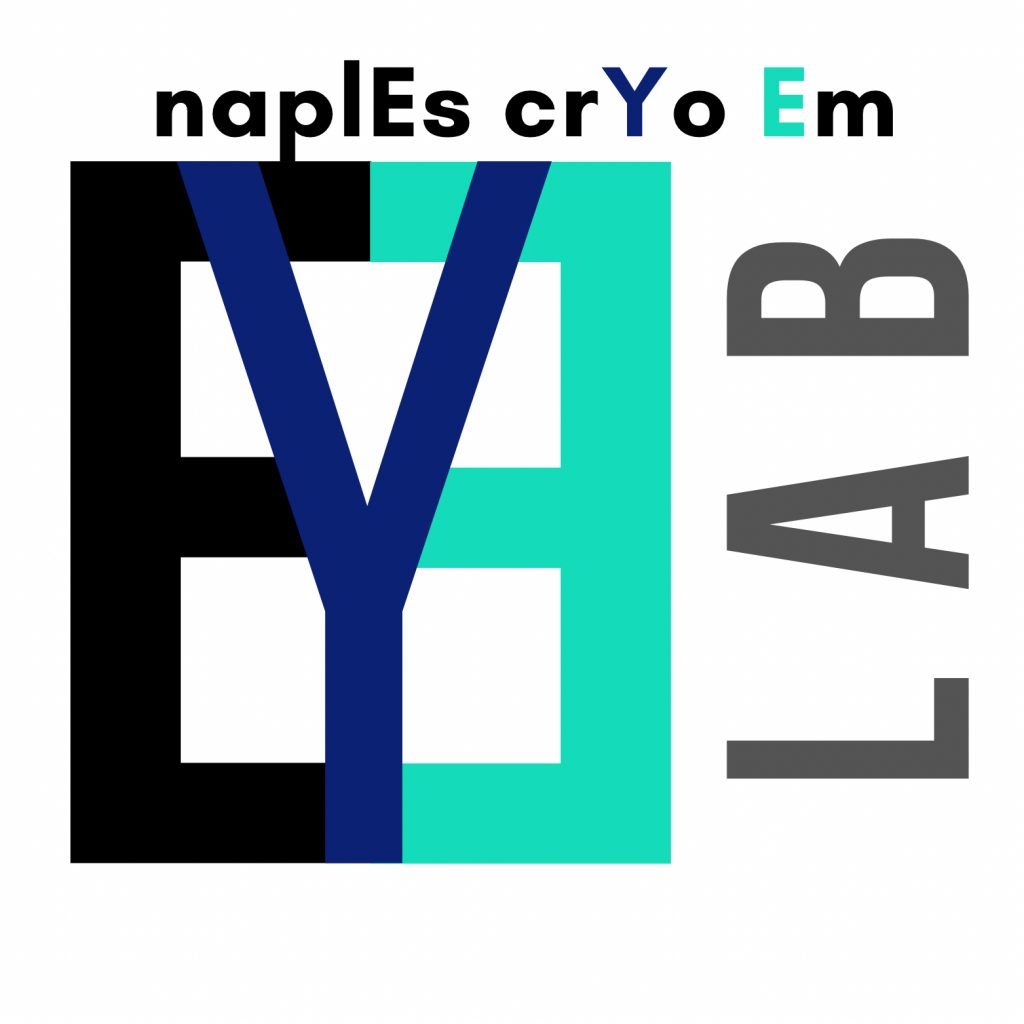Scientific manager: Emanuela Esposito

The Cryo Electron Microscopy laboratory at ISASI Naples provide the possibility to identify, visualize and characterize biological macromolecules alone and in their cellular environment. The Cryo-EM laboratory is designed to efficiently combine different work flows for single-particle analysis (Single Particle Analysis), that provides the high-resolution 3D structure of proteins, enzymes and other macromolecules and electron tomography (ET), which is used to observe and measure the inner architecture of cells, tissues and organoids.
An essential part of the workflow includes the vitrification of the samples using the “plunge freezing” technique. Furthermore, using the FIB-SEM technology (focused ion beam scanning electron microscopy) cells and other bio-vitrified material are thinned into lamella in order to make them analyzable by cryo-TEM; in the same way, cells and other bio-vitrified material can be sectioned to observe their cross section.
The Cryo-EM laboratory is equipped with the state-of-art electron microscopes:
- a cryo-transmission electronic microscope Thermo Scientific Glacios TEM 200kV equipped with a Thermo Scientific Falcon 4 camera/detector and Selectris X imaging filters;
- a cryo-double beam microscope Thermo Scientific Aquilos 2: one scanning electron and the other ion beam, for morphological investigations and preparation of lamellae at cryogenic temperature.
- A system Thermo Scientific Vitrobot suitable for the vitrification of biological samples
The laboratory is a scientific platform open to both public and private institutions

The laboratory was funded by PON IMPARA – IMAGING FROM MOLECULES TO PRECLINICAL, strengthening of the EURO BIOIMAGING labs.
OR3 Realization Objective: Cryo-electron microscopy for structural and cellular biology
Responsible: Ivo Rendina
How to access Eye Lab Cryo-EM technologies:
To access Eye Lab cryo-microscopy facility and propose a research activity submit a short proposal (max 3 pages) in which the following points are coherently described:
1. Background
2. Motivation for the access
3. Experimental plan
4. References
You will then be contacted to discuss and plan the proposed experimental research activity.

Laboratory Researcher staff

Microscopist and Application specialist
IT technical assistants:
Maurizio Indolfi and Domenico Passaro







